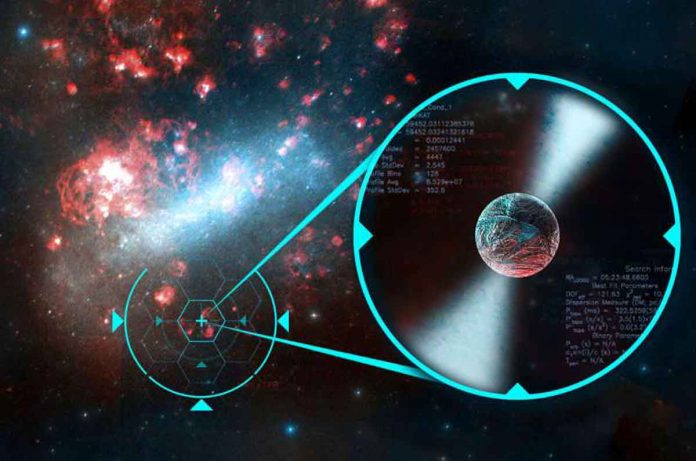Pulsars, which are rapidly spinning remnants of stars that flash like a lighthouse, occasionally exhibit extreme brightness variations. Scientists believe that these brief flashes of light are caused by dense regions of interstellar plasma (the hot gas between stars) scattering the pulsar’s radio waves. However, we still don’t know where the energy comes from to form and sustain these dense plasma regions. To better understand these interstellar formations, we need more detailed observations of their small-scale structure, and scintillation, or “twinkling,” of pulsars is a promising avenue for this.
When radio waves from a pulsar are scattered by interstellar plasma, the individual waves interfere and create an interference pattern on Earth. This pattern is observed as brightness variations in time and frequency as the Earth, pulsar, and plasma move relative to each other: the dynamic spectrum. This is called scintillation. Because pulsar signals are point-like, scattering and twinkling occur in small regions of the plasma. We can see striking parabolic features known as scintillation arcs after specialised signal processing of the dynamic spectrum, which are related to the image of the pulsar’s scattered radiation on the sky.
J1603-7202, a pulsar, underwent extreme scattering in 2006, making it an exciting target for studying these dense plasma regions. The pulsar’s trajectory, however, has yet to be determined because it orbits another compact star known as a white dwarf in a face-on orbit, and scientists lack alternative methods to measure it in this situation. Fortunately, scintillation arcs serve two functions: their curvatures are related to the velocity of the pulsar as well as the distance between the pulsar and the plasma. The pulsar’s velocity changes as it orbits, and this is determined by the orbit’s orientation in space. As a result, in the case of pulsar J1603-7202, we calculated the changes in the curvature of the arcs over time to determine the orientation in our recent study.
The orbital measurements we obtained for J1603-7202 are a significant improvement over the previous analysis. This demonstrates the utility of scintillation as a supplement to other methods. We measured the distance to the plasma and discovered that it was roughly three-quarters the distance from Earth to the pulsar. This does not appear to correspond with any known star or interstellar gas cloud positions. Pulsar scintillation studies frequently investigate structures like this that are otherwise invisible. As a result, the question remains unanswered: what is the source of the plasma that scatters the pulsar’s radiation?
Finally, we can estimate the mass of J1603-orbital 7202’s companion using our orbit measurement, which is roughly half the mass of the sun. When combined with J160-highly 7202’s circular orbit, this suggests the companion is most likely a stellar remnant composed of carbon and oxygen—a less common find around a pulsar than helium-based remnants.
Because we now have a nearly complete orbital model, we can convert scintillation observations of J1603-7202 into on-sky scattered images and map the interstellar plasma at solar system scales. Creating images of the physical structures that cause extreme scattering of radio waves may help us understand how such dense regions form and the role interstellar plasma plays in galaxies’ evolution.

